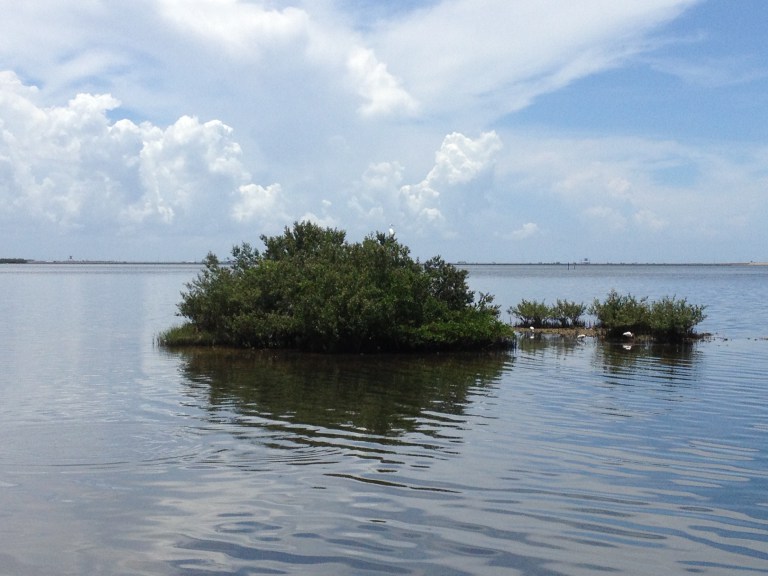More Bog for the Buck: Leveraging NEPA Efficiencies to Increase Restoration
On August 30, the Gulf Coast Ecosystem Restoration Council (the “Council”) announced that it is seeking public comment on a proposal to “approve implementation funding for the Robinson Preserve Wetlands Restoration project” in Florida. If the proposal is approved, the Council will allocate $1,790,546 in RESTORE Act (Pot 2) funds to implement the project, including a “reallocat[ion of] $470,910 from planning [funds] to implementation.” According to the Council, the project will restore approximately 118 acres of habitat, including coastal upland, wetland, and open water habitat types, in the Tampa Bay Watershed.
Utilizing NEPA Efficiencies to Save and Reallocate Planning Funds
 |
How is the Council able to reallocate nearly a half-million dollars in planning costs to implementation activities? The answer lies, at least in part, in its use of a mechanism intended to make environmental compliance more efficient: “adoption” of an existing environmental review document.
When planning funds for the Robinson Preserve project were first allocated in 2015, it was expected that a part of those funds would be used for “any needed environmental compliance activities,” including compliance with the National Environmental Policy Act (NEPA). Since then, the Council has identified and is proposing to adopt an existing NEPA document prepared by the project’s sponsor, the National Oceanic and Atmospheric Administration (NOAA), in 2015: a programmatic environmental impact statement (PEIS) addressing a range of restoration types. If the Council’s current proposal is approved, all of the funds that were originally allocated for planning will be re-allocated to implementation.
Adoption of Existing NEPA Documents
In general, unless a categorical exclusion is available, federal agencies document compliance with NEPA by preparing an environmental assessment (EA) or, if an action will have a significant impact on the environment, an environmental impact statement (EIS). There are, however, various mechanisms available under NEPA to help make the process more efficient, including the adoption of an existing EA or EIS. NEPA’s implementing regulations allow a federal agency to adopt an existing document (or a portion of it), even if it was prepared by a different agency, “provided that the statement or portion thereof meets the standards for an adequate statement.” In cases where “the actions covered by the original [EIS/EA] and the proposed action are substantially the same,” the agency is not required to recirculate the document for comment prior to adopting it as a final EIS/EA. (40 C.F.R. § 1506.3).
Here, the Council notes that “NOAA has determined that the specific implementation activities for which funding is being sought [for the Robinson Preserve project] are fully covered by [the existing] PEIS, and therefore no further NEPA review would be needed.” Thus, if the current proposal is approved, not only will the project be implemented on an expedited basis, there will also be an additional $470,910 available for on-the-ground restoration activities.
Other Examples of Adopting Existing NEPA Documents to Expedite Gulf Restoration
This is not the first time the Council has adopted existing NEPA documents to expedite implementation of a restoration project. For example, earlier this year, the Council announced that it had approved implementation funding for the Palm River Restoration Project in Florida, including the reallocation of $87,750 from planning to implementation. To do so, Council staff worked with the state of Florida, U.S. EPA, and the U.S. Army Corps of Engineers (Corps) “to identify an existing EA and associated environmental compliance documentation that could be used to support Council approval of implementation funding for Palm River.” The Corps had prepared the existing documentation when it issued a general permit, known as Nationwide Permit 27, for aquatic habitat restoration, establishment, and enhancement activities. The Council similarly adopted an existing EA to expedite and increase implementation funding for its 2016 Apalachicola Bay Oyster Project.
Looking Ahead
As the pace of restoration in the Gulf increases in the coming years, there are likely to be further opportunities for the Council and other restoration programs (e.g., the natural resource damage assessment (NRDA) process) to identify existing NEPA documents that satisfy compliance requirements in whole or in part. This could lead to expediting restoration projects and possibly directing more funds to restoration implementation.
Still Time to Comment
The Council’s proposal to fund implementation of the Robinson Preserve project has not yet been approved. You have until September 29 to submit any comments you may have. (As the Council explains, “After considering all public input received during the comment period, the Council will then determine whether to proceed to a vote on this funding proposal.”) Comments can be submitted by email or in writing to the mailing address listed in the notice.


